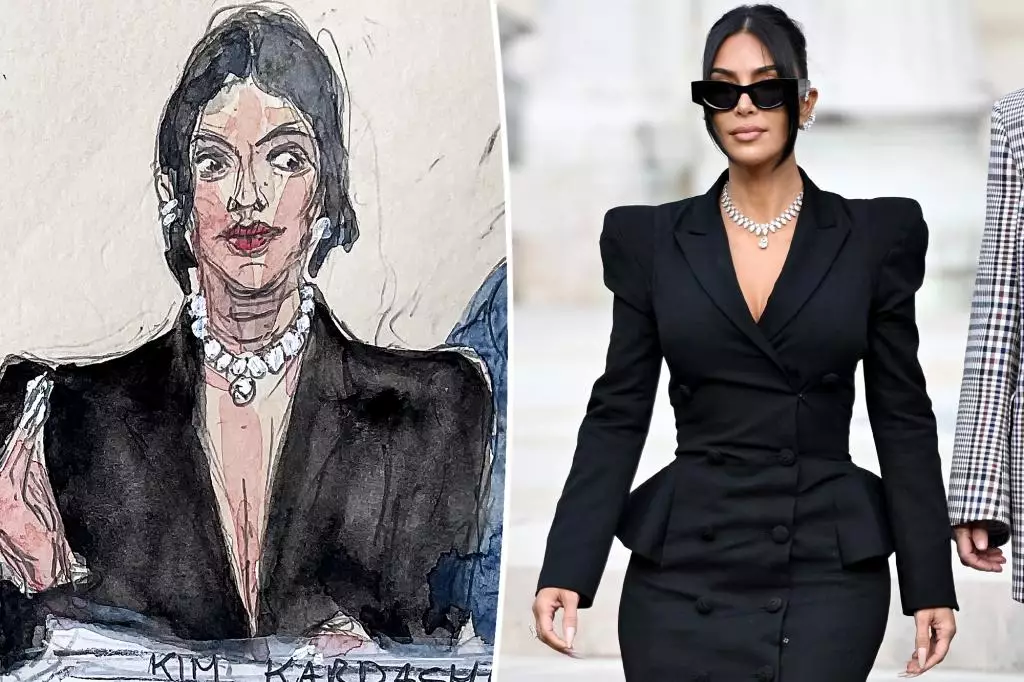The culmination of a high-profile legal saga has culminated in the conviction of eight individuals linked to the notorious diamond heist that ensnared reality television star Kim Kardashian in 2016. The Paris court’s decision to convict the “grandpa robbers,” a label that invokes both irony and disbelief, underscores not just the ramifications of their actions but also highlights perceived weaknesses within the judicial framework intended to protect victims. Ringleader Aomar Aït Khedache, along with others in his entourage, received sentences that left many wondering about the effectiveness of punitive measures when intertwined with considerations of age and prior incarceration.
Upon learning that Khedache was handed an eight-year sentence, with five years suspended, one must question the rationale of a system that offers leniency based on age—especially in cases involving violent crime and trauma. Are we suggesting that the frailty of old age should mitigate the severity of one’s actions? Time spent in pre-trial detention has rendered actual prison terms largely moot for these defendants, sparking debate about the fairness of the justice system. What does it say about our society when perpetrators of a crime as terrifying and impactful as this can evade real-time consequences because of their age?
Impact on Victims and Public Sentiment
Kardashian, through her public responses following the verdict, embodied resilience in the face of horrific adversity. Her statement lauded the French authorities for delivering justice, yet one cannot overlook the haunting recollections she shared regarding the incident. The trauma experienced during that terrifying night pales in comparison to the judicial outcomes that followed. Kardashian’s narration of the events, from being tied up and believing she would lose her life, provides a visceral understanding of a crime that goes beyond stolen possessions; it strips away one’s sense of safety and personal sovereignty.
Moreover, her message promotes an essential narrative surrounding the sequelae of crime—victims are not merely statistics but real people whose lives are irrevocably altered. With her acknowledgment of growth and accountability, Kardashian delicately balances her role as both a survivor and an advocate for systemic reform in criminal justice. When she calls for healing, one might ask: Is true healing possible without a robust punitive response to the crime? Society must grapple with its own comfort level regarding the punishment of offenders, particularly when those offenders are older individuals who may evoke sympathy.
Societal Reflections on Crime and Punishment
This case also nudges society into a careful introspection regarding how we address crime, victimization, and rehabilitation. While the defendants may serve their sentences at home due to pre-trial custody, the broader discourse on creative and effective sentencing must emerge. Is it enough to ensure these individuals face any form of punishment, or should the focus shift to rehabilitation programs and restorative justice initiatives designed to prevent recidivism? Society’s obsession with punitive justice often overshadows the need for systems that advocate for healing and societal forgiveness.
In reviewing Kardashian’s experience, her legal team’s comments also illuminate the procedural shifts that occur when victims take an active role in confronting their aggressors in court. Many might argue that Kardashian’s journey—from a terrified victim to a vocal advocate—can inspire those who have suffered similarly. Her bravery in facing the assailants in court fosters a sense of empowerment not just for herself but for countless individuals who feel immobilized by their trauma.
Future Ramifications and Cultural Considerations
As the cultural landscape continues to evolve through technology and social media, the public’s perception of celebrity and victimhood is transforming dynamically. This case is emblematic of a larger conversation about the intersectionality of fame and safety, illuminating vulnerabilities that high-profile individuals face due to their public personas. The constant scrutiny placed upon Kardashian underscores the fact that wealth and fame are not shields against violence or trauma.
With any such infamous case, the ripples extend beyond the courtroom; they enter public discourse and serve as an impetus for cultural reflection. After a verdict is rendered, what conversations linger in the minds of the public—discussions centered on justice, age, or perhaps the nuances of fame? As the dust settles from this harrowing episode, understanding the complexities and impacts of crime and punishment remains vital. The lessons learned here may shape future expectations of justice, not only for victims but also for society as a whole.

